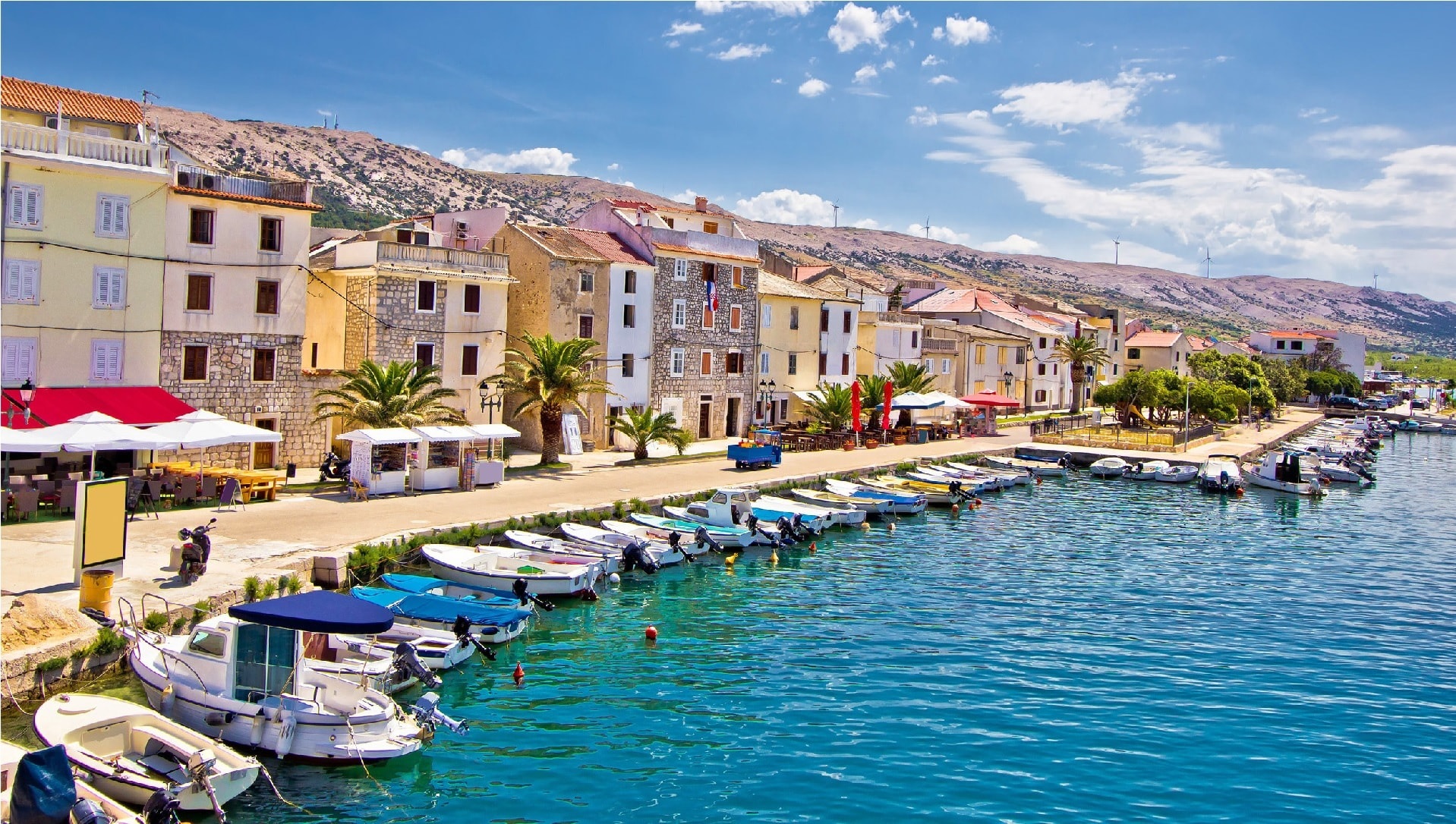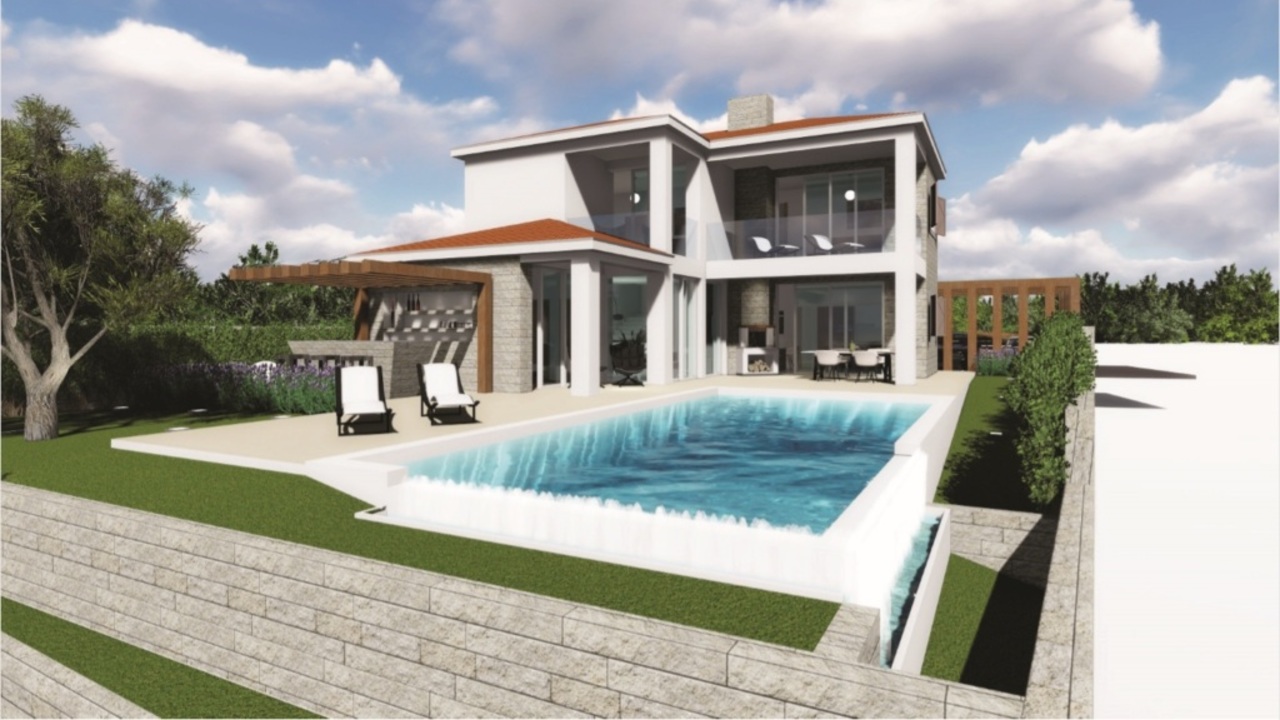
Pag is an island in the north of the Croatian part of Dalmatia, which belongs to the group of Kvarner islands. It is the third largest island in the Kvarner group and the fifth largest in the Adriatic at all.
The coast of the island is divided into several deep bays and its total length reaches 269 km, of which 84 km is found on pebble and sandy beaches. In the southeast of the island lies the karst lakes Velo blato and Malo blato. The highest point of the island is Sveti Vid (348 m). In the town of Pag, large salt pans (Paske solane) with an area of over 3 km² are decomposing, with salt being evaporated by evaporation of seawater. 33 000 tonnes each year accounted for 2/3 of salt production in Croatia.
The Mediterranean climate is dominated by the island. However, due to the cold winds from the mainland, it is only possible to grow grapes, vegetables, fruits and olives in the valleys.
The largest settlements are the historic town of Pag in the central part of the island and the main tourist resort of Novalja on the northwest coast. In 2011, the town of Pag established partnership contacts with Slavkov u Brna, which were confirmed by the contract in 2014. In order to involve the island in tourism, it was crucial to build roads, especially good asphalt roads from the ferry in Žigljena to the whole island to the east after the Pažský. The connection of the ferryboat was also well solved, by establishing a new connection and by building a new harbor in Pag in Žigljen and on the opposite mainland in Prizna.
The island of Pag is a destination for tourists who prefer a simpler and cheaper stay on the Adriatic, calm and clean sea and do not look for too noisy social entertainment and intense nightlife.
